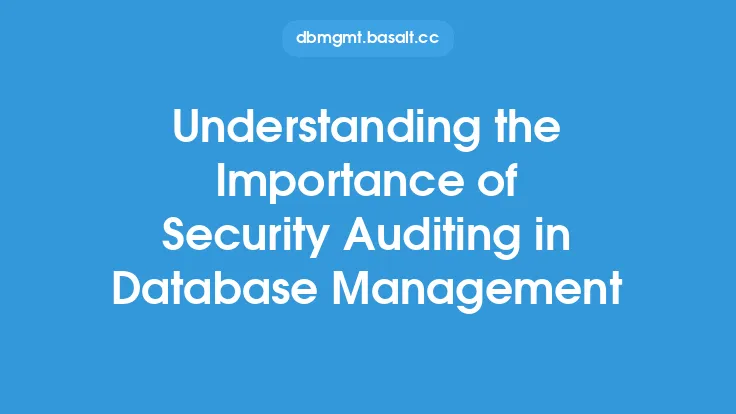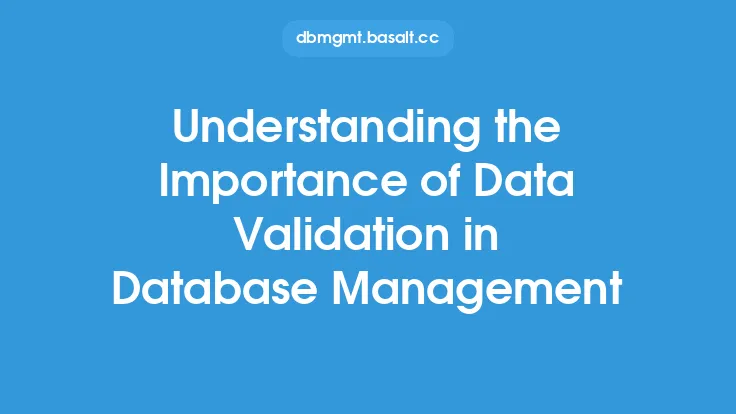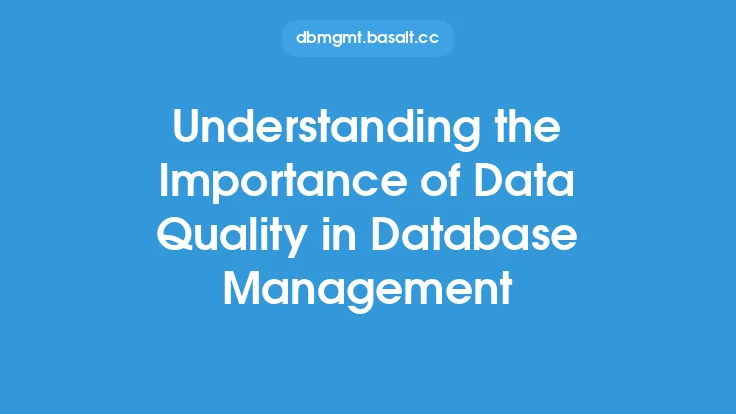Database change management is a critical aspect of database administration that involves the process of planning, implementing, and tracking changes to a database. It is essential to ensure that changes are made in a controlled and systematic manner to minimize the risk of errors, data loss, and downtime. Effective database change management is crucial for maintaining the integrity, security, and performance of a database, which in turn supports the overall stability and reliability of an organization's IT infrastructure.
Introduction to Database Change Management
Database change management involves a range of activities, including impact analysis, risk assessment, testing, and deployment of changes. It requires a thorough understanding of the database architecture, data models, and relationships between different database objects. Database administrators (DBAs) must work closely with developers, quality assurance teams, and other stakeholders to ensure that changes are properly planned, tested, and implemented. The goal of database change management is to ensure that changes are made in a way that minimizes disruptions to the business, while also ensuring that the database remains secure, scalable, and performant.
Benefits of Database Change Management
Effective database change management offers numerous benefits, including improved data integrity, reduced downtime, and increased productivity. By implementing a structured change management process, organizations can minimize the risk of errors and data loss, which can have significant financial and reputational consequences. Database change management also helps to ensure that changes are properly documented and tracked, which is essential for auditing and compliance purposes. Additionally, a well-planned change management process can help to reduce the time and effort required to implement changes, which can lead to increased productivity and efficiency.
Key Components of Database Change Management
There are several key components of database change management, including change request management, impact analysis, risk assessment, testing, and deployment. Change request management involves the process of receiving, reviewing, and prioritizing change requests from stakeholders. Impact analysis involves assessing the potential impact of changes on the database and related systems. Risk assessment involves identifying and mitigating potential risks associated with changes. Testing involves verifying that changes do not introduce errors or bugs, while deployment involves implementing changes in a production environment.
Database Change Management Process
The database change management process typically involves several stages, including planning, development, testing, quality assurance, and deployment. The planning stage involves identifying the need for a change, assessing the impact and risk of the change, and developing a plan for implementing the change. The development stage involves making the necessary changes to the database, while the testing stage involves verifying that the changes do not introduce errors or bugs. The quality assurance stage involves reviewing and testing the changes to ensure that they meet the required standards, while the deployment stage involves implementing the changes in a production environment.
Best Practices for Database Change Management
There are several best practices for database change management, including establishing a clear change management process, using version control systems, and testing changes thoroughly. Establishing a clear change management process helps to ensure that changes are properly planned, implemented, and tracked. Using version control systems helps to track changes and ensure that changes are properly documented. Testing changes thoroughly helps to ensure that changes do not introduce errors or bugs, while also ensuring that changes meet the required standards.
Common Challenges in Database Change Management
There are several common challenges in database change management, including managing complex database environments, ensuring data integrity, and minimizing downtime. Managing complex database environments can be challenging, especially in large-scale enterprise environments. Ensuring data integrity is critical, as changes can potentially introduce errors or data loss. Minimizing downtime is also essential, as changes can potentially disrupt business operations.
Tools and Technologies for Database Change Management
There are several tools and technologies available to support database change management, including database version control systems, change management software, and testing tools. Database version control systems help to track changes and ensure that changes are properly documented. Change management software helps to automate the change management process, while testing tools help to verify that changes do not introduce errors or bugs. Some popular tools and technologies for database change management include Git, Subversion, and Oracle Enterprise Manager.
Conclusion
In conclusion, database change management is a critical aspect of database administration that involves the process of planning, implementing, and tracking changes to a database. Effective database change management is essential for maintaining the integrity, security, and performance of a database, which in turn supports the overall stability and reliability of an organization's IT infrastructure. By establishing a clear change management process, using version control systems, and testing changes thoroughly, organizations can minimize the risk of errors and data loss, while also ensuring that changes are properly documented and tracked. As databases continue to play a critical role in supporting business operations, the importance of database change management will only continue to grow.





